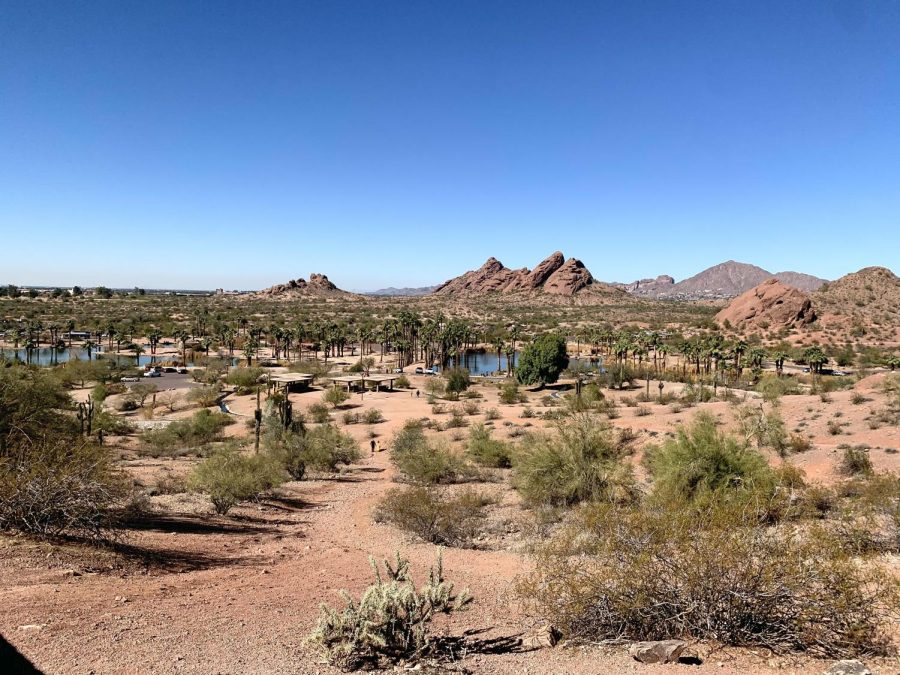Plans in place to reduce heat related illness and deaths in the Valley—the homeless and low income at greatest risk
The city of Phoenix plans to combat heat-related illness and death in the valley through an extensive “2023 Heat Response Plan”
Papago Park in Tempe
June 29, 2023
The city of Phoenix plans to combat heat-related illness and death in the valley through an extensive “2023 Heat Response Plan” – this is after a 2022 summer which saw a record amount of heat related deaths in the Valley.
Half of those deaths occurred in July, which is statistically the most dangerous month of the year for those without protection from the heat.
A detailed Heat Response Plan released by the State contains extensive data and statistics on the situation, and lays out a plan to implement a variety of “programs and services intended to protect public health and quality of life from the threats posed by hot weather.”
Goal number 1, according to the reports objective list, is to “Reduce the number of heat-associated deaths in the City of Phoenix compared to 2022.”
A statistical overview in the plan found that in the Summers of 2021 and 2022, a large majority of heat stroke or heat illness were in Central/Downtown Phoenix and that many of the cases were related to illegal narcotic substances, highlighting a greater homeless issue in the Valley.
“60% of cases involved substance use, with most substance use cases involving
drugs without alcohol.” Read a statistic included in the report.
“38% of cases involved people experiencing homelessness. The rate of heat associated death among people experiencing homelessness is approximately 300 times higher than the rest of the population.” The report continues.
How does the state plan to protect those vulnerable to the heat?
The Heat Response report outlines a plan to open more cooling centers, especially in areas with a high homeless population. In collaboration with The Society of St. Vincent De Paul, the city opened a new homeless shelter on 28th St and Washington, that promises to offer relief to those suffering in the heat.
The report also outlines the necessity to secure more workers for shelter jobs and cooling centers. Along with ensuring proper supply chain of supplies to non-profit organizations.
“More than 50 City facilities operated by 3 different departments are expected to participate as cooling centers and/or hydration stations in 2023. Phoenix’s involvement represents about 1/3 of the total number of facilities participating in the regional Heat Relief Network” the report states.
More long-term solutions are also being pursued by the State in order to combat climate change in our sprawling desert metropolis.
In addition to making access to air conditioning and water more accessible for all, the city of Phoenix is also facilitating an effort to transform the image of the city, not only for aesthetic reasons but for practical ones as well.
The Tree and Shade Master Plan aims to create, and facilitate in a sustainable way, what it calls the “Phoenix Urban Forest.”
It’s been reported that those in low-income areas suffer the most from heat, this is due to a phenomenon known as the “Urban Heat Island Effect.” Lower income areas in the valley have little to no shading from trees, this greatly exacerbates the hot temperatures and is the primary reason the overnight low temperatures are still very high, the heat radiates from the large swaths of open pavement.
By simply planting more shade, the project aims to not only transform the image of lower income areas but also greatly improve the urban heat effect they endure.
For relief or risk of heat related incidents Arizonans can refer to the Heat Relief Network map for locations offering free cooling/hydration services.


